Why does my washing machine make a loud noise when rinsing?
 A little noise during operation of the automatic machine is normal. For example, when rinsing, the washing machine constantly turns on the pump, which pumps out water while making sounds. You should sound the alarm if the hum has become stronger than before. Then we can probably talk about a breakdown.
A little noise during operation of the automatic machine is normal. For example, when rinsing, the washing machine constantly turns on the pump, which pumps out water while making sounds. You should sound the alarm if the hum has become stronger than before. Then we can probably talk about a breakdown.
Let's figure out why the automatic machine makes a loud noise when rinsing. What problem does the noise indicate? We'll tell you how to fix the problem yourself.
The main SM filter is clogged
If the washer makes a loud noise when rinsing, you should pay attention to the drain filter. Perhaps a foreign object (coin, key, paper clip) got into the trash can. In this case, the operation of the pump impeller becomes difficult and the machine begins to make noise.
The drain filter traps all debris that ends up in the drainage system of the washing machine. It is very easy to check and clean the plastic spiral. The procedure will take no more than 5-10 minutes.
Before unscrewing the drain filter, be sure to turn off the power to the washing machine.
Where is the "trash can"? Most washing machines have a drain filter located on the front, in the lower left corner. It is hidden behind a technical hatch or false panel. The algorithm of actions will be as follows:
- de-energize the SMA;
- disconnect the automatic machine from the water supply and sewerage;
- move the washing machine away from the wall;
- open the technical hatch door or remove the lower false panel (a thin screwdriver will help you to remove the latches);
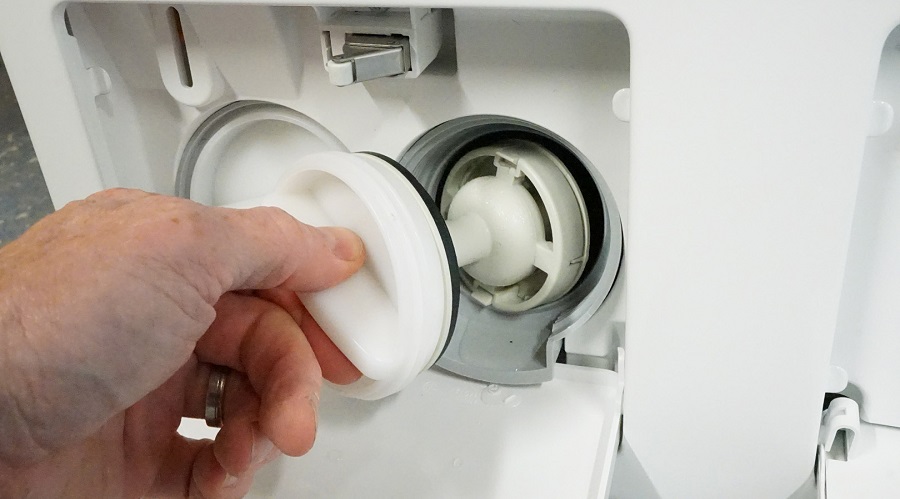
- slightly tilt the washing machine body back to raise the front by 5-10 cm;
- place a container under the machine in the area where the drain filter is located to collect water;
- using an emergency drain hose, remove the water accumulated in the system (remove the plug from the pipe and direct its end into the basin);
- Unscrew the waste filter plug half a turn, wait until the water flows into the container;
- remove the filter element.
After this, the filter should be cleaned and washed in warm water. You can soak it for a couple of hours in a concentrated solution of citric acid. You cannot treat plastic with boiling water - it can become deformed. Next, pay attention directly to the seat.
Shine a flashlight into the hole and remove all foreign objects from the machine. Afterwards, wipe the walls of the seat with a clean damp cloth to remove dirt. In the depths you can see the pump impeller - if hair and threads are wound around the blades, be sure to remove them from the part.
Having finished with the “cleaning”, you can put the drain filter in place. Make sure the spiral is level. Then you need to run a test wash. If there is no leakage, it means that the trash can was installed correctly.
Clogged drain hose
A loud noise when rinsing may be caused by a clogged drain hose. It often happens that the garbage filter is clean, but the base of the drain hose is clogged. In this case, the water goes down the drain in a thin stream, the pump operates under increased loads, and the machine makes more noise.
The quality of tap water in many regions of Russia leaves much to be desired. The impurities contained in it gradually settle on the walls of the drain hose, clogging it. Eventually, a plug forms in the corrugation, which prevents the normal removal of waste liquid from the washing machine tank.
In addition to noise during operation, this situation is fraught with rapid failure of the pump. The pump works under greater load, trying to push water through the clog. Therefore, it is logical that the part will break faster if the hose is not cleaned.
To remove the washing machine drain hose, you must: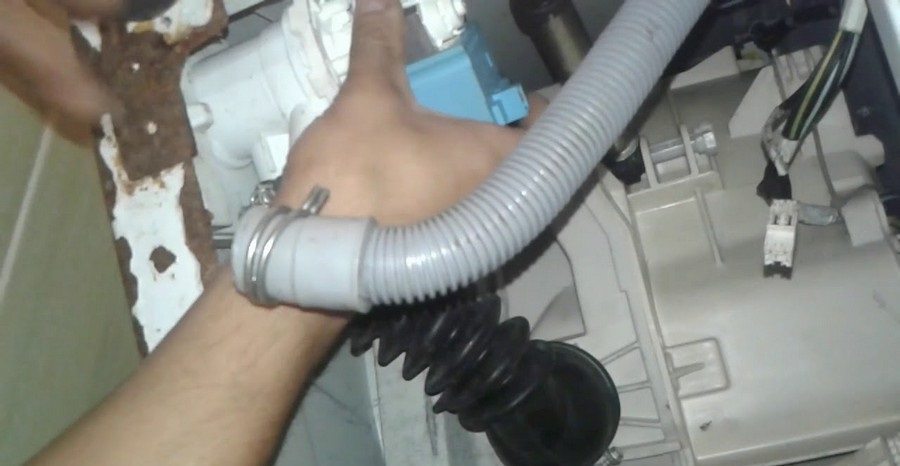
- turn off the power to the washing machine, disconnect it from communications;
- drain the remaining water from the system by unscrewing the garbage filter;
- lay the machine on the back wall (this will allow you to get to the place where the drain hose is attached);
- remove the clamp with which the sleeve is fixed to the machine;
- pull the hose and remove it from the washing machine body.
When pulling the drain hose out of the housing, it is important not to damage the plastic latch. Next, you can begin cleaning the pipe. For this:
- prepare a concentrated solution of citric acid (dilute 30-50 grams of powder in 1 liter of water);
- soak the drain hose for 1-2 hours in the resulting solution;
- Rinse the sleeve under warm water pressure.
Citric acid or special household chemicals will help to cope with lime deposits.
After cleaning, the drain hose is connected to the washing machine. Next, the test wash is activated. Observe the work of the “home assistant” - if the problem was a blockage, then the strong hum will not happen again.
Checking and replacing the pump
The worst thing is if the cause of the strong hum when rinsing is in the pump itself. The first thing to check is the pump impeller. To do this, unscrew the plug of the garbage filter and shine a flashlight into the hole formed. Inspect the blades - they should be intact.
Next, the movement of the impeller is checked. Try to turn it around. The part should move, but not freely, but with a little effort. You may need to clean or replace the pump itself.To do this, you need to get close to the detail. The algorithm of actions is as follows: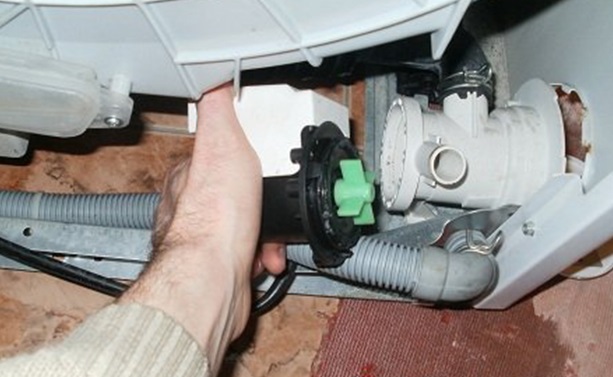
- turn off the power to the washing machine, disconnect it from the water supply and sewerage;
- Place the washing machine on the floor, on its left side;
- remove the bottom of the case;
- find the pump - it is located immediately under the tank.
Before replacing your pump, it is recommended that you check it. Diagnosis of the drain pump is performed with a multimeter. If the tester shows that the part is faulty, the element will have to be replaced; it cannot be repaired.
It is necessary to buy a new pump based on the model and serial number of the washing machine. You can also dismantle the old element and pick up a similar spare part in the store. Installing the drain pump is done in reverse order.
If the multimeter does not detect a problem, simply cleaning the pump will probably suffice. Dirt also accumulates in its body. Remove the pump and disassemble it. After removing the debris, put the item back and run a test wash.
Interesting:
Reader comments
- Share your opinion - leave a comment



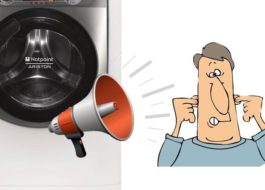
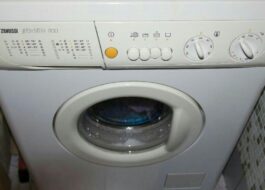
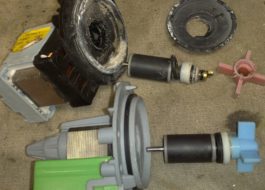















Add a comment